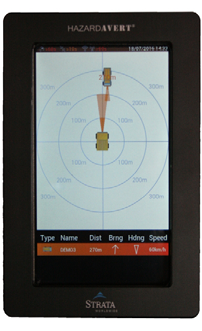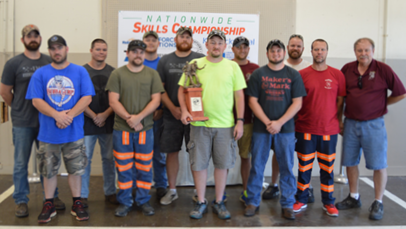There isn’t a mine manager out there that wants to see an emergency happen to him, his colleagues or his crews. Every single one, however, has given at least some thought to how such an event would be handled.
Every modern mine, also, has at least some level of preparation for the worst case-scenario in its emergency response plan (ERP); those mines that consider themselves at the forefront have participated in drills, permitted third-party research on prevention ideas, or even learned firsthand by being directly involved in a past emergency.
No one wants to wait to see if luck is on their side in an emergency situation. The extent any operation goes, however, to ensure that emergency prevention technology and processes are in place in order to be fully prepared for what one hopes will never happen, varies from site to site.
As the old adage goes, information is power, and because the area of mine emergencies is one of rapid evolution — every emergency of mining’s past has taught the industry something new and shown the potential for something it may not have realized it needed — there are consistently new emerging technologies, products and ideas. Here are a few prevention and preparedness innovations for coal.
Miners can wear the HazardAvert 360° system’s PAD component on their belt or their arm.
A 360° View
One significant facet of preventing an emergency situation from ever happening is having a comprehensive view at an area where work is being performed. Long known for its solutions in underground coal, including the HazardAvert electromagnetic proximity detection technology, Strata Worldwide recently added a system ideal for surface mining, HazardAvert 360°, that does just that.
Officially launched at MINExpo International 2016, the surface proximity detection and collision avoidance system integrates multirange detection technologies to give close range as well as extended range and full-view awareness during work in or near mobile equipment. Both pedestrians and other equipment in the area can be recognized with HazardAvert 360°, then displayed on an on-dash screen in the vehicle. If a danger of collision exists, audible and visual warning alarms will be activated.
Strata’s newest system offers vehicle-to-vehicle, vehicle-to-person and vehicle-to-fixed-asset detection and can be placed on any type of mobile equipment. When a person wearing a personal alarm device (PAD) is recognized, the on-dash display screen will indicate that a pedestrian is near and, should danger be imminent, both that individual and the equipment operator will be alerted.
When HazardAvert 360° enters warning mode, whether vehicle-to-vehicle or vehicle-to-person, the on-dash display screen will flash and an audible sounder will alarm to alert an operator or operators. Pedestrian PADs, which are belt- or arm-worn and have been designed to be both lightweight and ergonomic, also include a flashing LED warning light and audible sound that serve to alert the pedestrian of a potential issue.

The interface shows when vehicles or pedestrians are in close proximity.
Strata officials noted that equipment operators can manually override warning alarms on the display once they are activated to enable other vehicles or pedestrians to approach in certain situations as needed.
The HazardAvert 360° and HazardAvert electromagnetic systems can be integrated to operate in conjunction with one another, displaying needed information on a single user interface. Together the systems provide comprehensive detection and alarm capabilities, including the ability to automatically slow, stop or disable the equipment in an emergency situation. The system integration is seamless, requiring no interaction or input from equipment operators during operations.
Draeger Digs in With New Technology
It seems the wave of popularity for the best new products in mining largely parallels that of everyday society — when something helps make like better, safer or more efficient, word gets around fast. That has been the case for Draeger, whose ChargeAir system has been garnering a lot of attention with coal operations who want to remain at the forefront of preparedness for an emergency they hope will never arrive.
The breathing air system serves as a refill station to allow escape from a mine emergency without having to change out equipment. Unlike other self-rescuers, which have a finite period of use before the entire device needs to be switched out for new, those using Draeger’s self-contained breathing apparatus — including mine rescuers aiding in an evacuation — can stop at the station and recharge their clean breathing air while the tank is still donned, and with just three quick steps that can be completed even in times of low visibility.

ChargeAir allows for easy, quick recharging of SCBA tanks underground.
There are four versions of the system: ChargeAir 5, ChargeAir 10, ChargeAir 20 and ChargeAir 40. The smallest of the line is designed to refill a minimum of five 60-minute bottles to 4,500 pounds per square inch (psi) and the largest, likewise, a minimum of 40 bottles to the same psi pressure rating.
For rescuers, the system ensures that teams can tackle a fire or other emergency more rapidly and remain near caches or fresh air at any time. For evacuating miners, the hazards of needing to switch from SCSR to another SCSR, such as exposure to dangerous air, are negated. It need only be done one time; the ChargeAir system only requires a single swap-out from a belt-worn SCSR to a SCBA, which subsequently can be refilled at ChargeAir stations without ever removing one’s mask.







